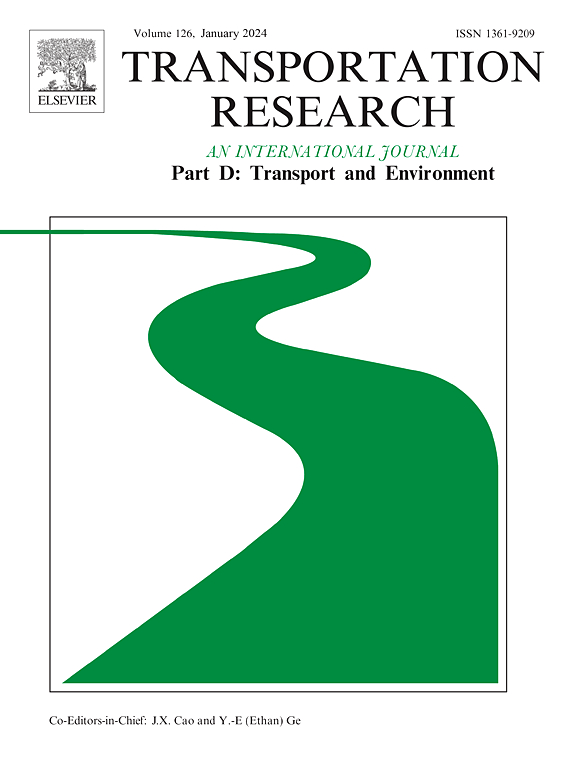An adaptive prediction framework for NOX high-emissions: evidence from Nanjing, China
IF 7.7
1区 工程技术
Q1 ENVIRONMENTAL STUDIES
Transportation Research Part D-transport and Environment
Pub Date : 2025-08-26
DOI:10.1016/j.trd.2025.104965
引用次数: 0
Abstract
The efficient predictions of NOX high-emissions from heavy-duty diesel vehicles are crucial to facilitate proactive emission reduction rather than post-intervention analysis. Based on 839,303 real-world driving records, a spatial–temporal guided deep transfer learning framework was developed and evaluated, where shared-determinants of NOX high-emissions were frozen and vehicle-specific characteristics were adaptively fine-tuned. The results indicate that the 95th percentile can serve as an identification threshold for NOX high-emissions, and corresponding hotspots and heterogeneous areas were identified. Compared with isolated spikes, prolonged NOX high-emissions deserve more attention, where frequent fluctuations in driving behaviors and engine conditions are primary contributors. Finally, the optimal combination of model structure and frozen strategy is recommended to facilitate NOX high-emission predictions across individual vehicles, with stable macro-average F1-socres of 0.92. Such findings provide environmental authorities with a deep understanding of NOX high-emissions, and offer technical supports for developing early warning systems and achieving proactive emission interventions.
氮氧化物高排放的自适应预测框架:来自南京的证据
重型柴油车氮氧化物高排放的有效预测对于促进主动减排而不是事后分析至关重要。基于839,303个真实驾驶记录,开发并评估了一个时空导向的深度迁移学习框架,其中冻结了NOX高排放的共同决定因素,并自适应微调了车辆的特定特征。结果表明,第95百分位可以作为NOX高排放的识别阈值,并识别出相应的热点和异质区。与孤立尖峰相比,长时间的NOX高排放更值得关注,其中驾驶行为和发动机工况的频繁波动是主要影响因素。最后,提出了模型结构与冻结策略的最优组合,以促进单车NOX高排放预测,宏观平均f1值稳定在0.92。这些发现为环保部门深入了解氮氧化物高排放提供了依据,并为开发早期预警系统和实现主动排放干预提供了技术支持。
本文章由计算机程序翻译,如有差异,请以英文原文为准。
求助全文
约1分钟内获得全文
求助全文
来源期刊
CiteScore
14.40
自引率
9.20%
发文量
314
审稿时长
39 days
期刊介绍:
Transportation Research Part D: Transport and Environment focuses on original research exploring the environmental impacts of transportation, policy responses to these impacts, and their implications for transportation system design, planning, and management. The journal comprehensively covers the interaction between transportation and the environment, ranging from local effects on specific geographical areas to global implications such as natural resource depletion and atmospheric pollution.
We welcome research papers across all transportation modes, including maritime, air, and land transportation, assessing their environmental impacts broadly. Papers addressing both mobile aspects and transportation infrastructure are considered. The journal prioritizes empirical findings and policy responses of regulatory, planning, technical, or fiscal nature. Articles are policy-driven, accessible, and applicable to readers from diverse disciplines, emphasizing relevance and practicality. We encourage interdisciplinary submissions and welcome contributions from economically developing and advanced countries alike, reflecting our international orientation.

 求助内容:
求助内容: 应助结果提醒方式:
应助结果提醒方式:


